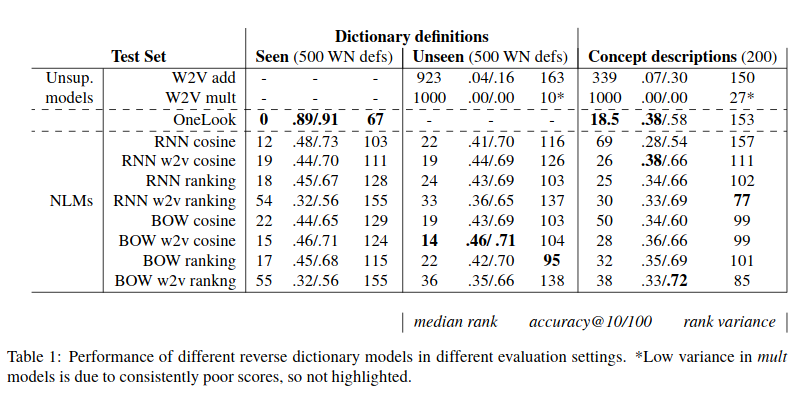Rylan Schaeffer

Resume
Research
Learning
Blog
Teaching
Jokes
Kernel Papers
Learning to Understand Phrases by Embedding the Dictionary
by Hill, Cho, Korhonen, Bengio (ACL 2016)
Background
Semantics, the linguistic study of meaning, has at least two subfields: (1) lexical semantics, which concerns how the meaning of word acts in grammar in composition as well as how different uses of a word relate, and (2) phrasal semantics, which concerns the meaning of syntactic units larger than a word (e.g. a phrase, a sentence, a paragraph).
Research Questions
- Can we train neural language model to map words to definitions and vice versa?
Approach
- Train Word2Vec on 8 billion words from large corpus with 500 dimensional embeddings
- Consider three models (RNN, LSTM, Bag of Words), each with own randomly initialized embedding, and train to output the Word2Vec embedding of a word given the word’s definition.
- Consider 2 losses: (1) cosine distance, and (2) rank loss, where \(c\) is the test word, \(s_c\) is the definition sequence, \(M(s_c)\) is the language model’s output, \(v_c\) is the pretrained embedding from Word2Vec and \(v_r\) is the pretrained embedding of a randomly selected word:
Experiment 1: Reverse Dictionary
- Compare neural models against online tool OneLook, which is a reverse dictionary: given a sentence, return a list of candidate words


Experiment 2: Crossword Solving
- Compare neural models against Word2Vec addition and online tool OneAcross
